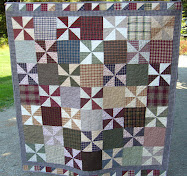1. Know your zone! Your local garden center or nursery will be able to tell you what zone you live in, or you can use this to find out. Different plants grow better in different zones.

2. Know what you can and can't plant. This goes along with #1 but I guess I want to stress it because not everyone can grow, for example, corn. Trust me, I know. This is the first year I did not plant corn. While I may be able to find a breed of corn that grows better in cooler climates, the fact is that corn likes lots of sun and warmth, neither of which we have here. Why am I forcing something that is just not natural? I would especially recommend planting for your area if you're a first time gardener. There's nothing worse than crop failure your first year. It'll make you feel as if your green thumb has turned brown!
3. After careful consideration of sunlight and where it rises and sets, map out your garden on a piece of paper. This will allow you to better plan the placement of your plants or vegetables. Don't go in without a plan or you'll get your pole beans growing so tall they shade your tomatoes for half the day!

4. Seeds should be planted twice as deep as they are large. Example: pole beans are about 1/2" long, they get planted 1" deep.
5. Space your plants out (if you're doing veggies.) A great reference for this is the book Gardening When it Counts. It is better to have a few vegetables with optimal nutrition than 20 of them with little nutrition.
6. If you don't live in an area with a lot of rain and have to water often, mulch your garden. Chips from trees or straw works well. This will help retain moisture in the ground and as a bonus, keep your weeds down!
7. Weed often. Not only is it easier to pull up little weeds rather than big ones but weeds compete with your plants for nutrients.

8. Water deep. When you thoroughly soak your ground at a watering, it benefits you in two ways. First, you don't have to water as often and second, your plants roots will grow down deep into the soil and result in healthier, bigger plants. Shallow watering encourages shallow plant roots and small, weak plants. Watering first thing in the morning is the best time to water. It helps your plants manage the rays of the hot sun during the day and allows for drying time so that nothing is sitting wet overnight.
9. Plant only what you need and in phases. Example; Unless you're feeding a family of 20, two 10' rows of lettuce planted all at the same time is not only going to be way too much but is all going to come ripe at the same time. Plant what your family can eat fresh (can the leftovers) and stage planting things like lettuce or broccoli so that you can eat it as it comes ripe. Planting this way will also save space in your garden, if your space is limited.

10. Grow as much as you can vertically if your garden is space challenged. Choose pole beans over bush beans, trellis anything else you grow that can climb (i.e. cucumbers.)
11. Compost! What a fantastic way to turn your kitchen scraps into nutritious dirt for feeding your plants! Remember to only put raw things into your compost and avoid all meats. You want to add things that rot, not that go rancid. Grass clippings and raked leaves make for excellent additions to your compost bin. Try to have your bin in a somewhat sunny location (heat is what makes the contents turn to dirt.) Turn your compost regularly with a pitchfork and if it looks as if it's drying out too much you can add water. We don't have that problem here in the pacific northwest. Things actually take longer to break down because of the cooler temps and lots of rain!
12. Go organic! If you're starting seeds (which I would recommend, they're less expensive and easier than you think to start) or purchasing starts, try and buy organic ones. Research the types of plants and bugs that you can add to your garden (yep, you can even buy beneficial bugs) to eliminate the need for chemical bad bug control. You can also create a space near your garden to act as a buffet to draw in birds that like to eat all those pesky little bugs. Use things like natural fertilizers and compost to feed your plants on a regular basis.

13. Finally, know that gardening is learned through trial and error and that even after years of gardening you'll still be learning and trying new things. Enjoy your garden and the bountiful harvest you'll be able to reap throughout the growing season!

.jpg)


















































7 comments:
Great advice. I'm really trying to do more succession planting this year. We'll see how I do!
Great tips! I love them all.We planted sweet peas today :)
very good, informative post!
Last year I had success with Kandy Korn. And it's a pretty variety of sweet corn, it has burgundy colored stalks. Super sweet and yummy!
I love the idea of companion gardening (pole beans around the corn stalks). And have been reading about what veggies work best together.
Have you ever read any of Sharon Lovejoy's books? I can't remember if we "talked" about her before?
Love the way she gardens. No -cides, only home remedies and organic stuff. her books are great!
I'm still learning and enjoying every day of it. Gardening is a fun hobby to experiment with.
Lots of good info! I can't believe how different our soils look!
your garden is gorgeous!!! how i wish i had one
great info i love my veggie gardens !!!!!! i love that the kids can get involved !!!!! do you trellis you cukes?? i have never tried it but i hate that they sit ion the ground and take up so much space.
That's a great post Heather. Very well written.
Our garden is something my husband and I do together. We live on a city lot (we'd LOVE to buy an acre and hope to do so one day.) We garden in 6 raised beds in different parts of our yard and are hoping for a big harvest this year, the Lord willing.
Post a Comment